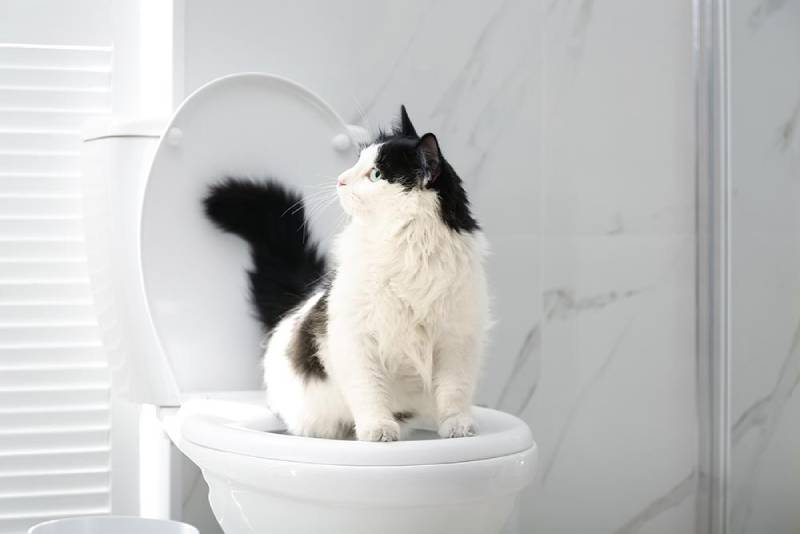Why Flushing Cat Poop Down Your Toilet May Cause Problems - Recommendations for Proper Disposal
Why Flushing Cat Poop Down Your Toilet May Cause Problems - Recommendations for Proper Disposal
Blog Article
We've noticed this great article on Don’t flush cat feces down the toilet below on the net and believe it made perfect sense to share it with you in this article.

Intro
As cat proprietors, it's necessary to bear in mind how we throw away our feline pals' waste. While it may seem convenient to flush pet cat poop down the bathroom, this technique can have damaging repercussions for both the environment and human health and wellness.
Alternatives to Flushing
The good news is, there are more secure and more responsible methods to take care of pet cat poop. Think about the adhering to choices:
1. Scoop and Dispose in Trash
The most typical technique of taking care of feline poop is to scoop it into an eco-friendly bag and toss it in the garbage. Make certain to use a dedicated litter scoop and deal with the waste immediately.
2. Usage Biodegradable Litter
Opt for biodegradable pet cat clutter made from products such as corn or wheat. These clutters are eco-friendly and can be securely disposed of in the trash.
3. Bury in the Yard
If you have a backyard, consider burying feline waste in an assigned location away from vegetable yards and water resources. Make sure to dig deep sufficient to stop contamination of groundwater.
4. Set Up a Pet Waste Disposal System
Purchase an animal waste disposal system specifically made for pet cat waste. These systems utilize enzymes to break down the waste, minimizing smell and environmental influence.
Wellness Risks
Along with environmental concerns, flushing cat waste can additionally present health and wellness threats to people. Feline feces may contain Toxoplasma gondii, a bloodsucker that can create toxoplasmosis-- a potentially severe ailment, especially for pregnant females and individuals with damaged body immune systems.
Environmental Impact
Purging pet cat poop introduces hazardous virus and parasites right into the water, positioning a substantial danger to aquatic ecosystems. These pollutants can adversely influence marine life and concession water quality.
Verdict
Accountable pet possession extends past providing food and sanctuary-- it also includes proper waste monitoring. By refraining from purging cat poop down the commode and choosing different disposal methods, we can lessen our ecological footprint and secure human health.
Why Can’t I Flush Cat Poop?
It Spreads a Parasite
Cats are frequently infected with a parasite called toxoplasma gondii. The parasite causes an infection called toxoplasmosis. It is usually harmless to cats. The parasite only uses cat poop as a host for its eggs. Otherwise, the cat’s immune system usually keeps the infection at low enough levels to maintain its own health. But it does not stop the develop of eggs. These eggs are tiny and surprisingly tough. They may survive for a year before they begin to grow. But that’s the problem.
Our wastewater system is not designed to deal with toxoplasmosis eggs. Instead, most eggs will flush from your toilet into sewers and wastewater management plants. After the sewage is treated for many other harmful things in it, it is typically released into local rivers, lakes, or oceans. Here, the toxoplasmosis eggs can find new hosts, including starfish, crabs, otters, and many other wildlife. For many, this is a significant risk to their health. Toxoplasmosis can also end up infecting water sources that are important for agriculture, which means our deer, pigs, and sheep can get infected too.
Is There Risk to Humans?
There can be a risk to human life from flushing cat poop down the toilet. If you do so, the parasites from your cat’s poop can end up in shellfish, game animals, or livestock. If this meat is then served raw or undercooked, the people who eat it can get sick.
In fact, according to the CDC, 40 million people in the United States are infected with toxoplasma gondii. They get it from exposure to infected seafood, or from some kind of cat poop contamination, like drinking from a stream that is contaminated or touching anything that has come into contact with cat poop. That includes just cleaning a cat litter box.
Most people who get infected with these parasites will not develop any symptoms. However, for pregnant women or for those with compromised immune systems, the parasite can cause severe health problems.
How to Handle Cat Poop
The best way to handle cat poop is actually to clean the box more often. The eggs that the parasite sheds will not become active until one to five days after the cat poops. That means that if you clean daily, you’re much less likely to come into direct contact with infectious eggs.
That said, always dispose of cat poop in the garbage and not down the toilet. Wash your hands before and after you clean the litter box, and bring the bag of poop right outside to your garbage bins.
https://trenchlesssolutionsusa.com/why-cant-i-flush-cat-poop/

Do you enjoy reading up on Can You Flush Cat Poo or Litter Down the Toilet?? Put a review directly below. We'd be glad to hear your ideas about this blog posting. Hoping to see you back again before long. Are you aware of somebody else who is inquisitive about Can You Flush Cat Poo or Litter Down the Toilet?? Take a moment to share it. Kudos for your time. Don't forget to stop by our website back soon.
Browse Website Report this page